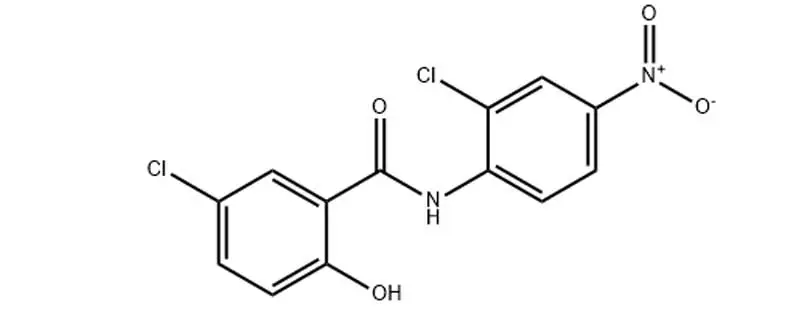Niclocide Powder, a medication primarily used for treating parasitic infections, has gained attention for its potential use in skincare. However, many people are curious about whether it can be safely applied to facial skin. This blog post will explore the use of Niclocide Powder on facial skin, its effectiveness, and important considerations to keep in mind.

What are the benefits of using Niclocide Powder on the face?
Niclocide Powder, also known as niclosamide, has been traditionally used as an anthelmintic medication to treat parasitic worm infections. However, recent studies and anecdotal evidence suggest that it may have potential benefits for facial skin when used topically. Here are some of the potential benefits of using Niclocide Powder on the face:
- Acne treatment: Niclocide Powder has shown promise in treating acne due to its antimicrobial properties. It may help reduce the growth of acne-causing bacteria on the skin, potentially leading to fewer breakouts and clearer skin.
- Anti-inflammatory effects: Some users have reported that Niclocide Powder helps reduce inflammation and redness associated with various skin conditions, including acne and rosacea. This anti-inflammatory effect may help soothe irritated skin and promote a more even complexion.
- Exfoliation: The fine powder texture of Niclocide may provide gentle exfoliation when applied to the skin. This can help remove dead skin cells, unclog pores, and improve overall skin texture.
- Sebum regulation: Some users have noticed that Niclocide Powder helps control excess oil production on the face, which can be beneficial for those with oily or combination skin types.
- Potential anti-aging properties: While more research is needed, some studies suggest that niclosamide may have anti-aging effects by promoting collagen production and protecting skin cells from oxidative stress.
It's important to note that while these potential benefits are promising, more scientific research is needed to fully understand the effects of Niclocide Powder on facial skin. Additionally, individual results may vary, and it's always best to consult with a dermatologist before incorporating any new product into your skincare routine.
How should Niclocide Powder be applied to the face?
If you're considering using Niclocide Powder on your facial skin, it's crucial to understand the proper application method to maximize its potential benefits and minimize any risks. Here's a step-by-step guide on how to apply Niclocide Powder to your face:
- Cleanse your face: Start with a clean face by washing it thoroughly with a gentle cleanser suitable for your skin type. Pat your skin dry with a clean towel.
- Prepare the Niclocide mixture: Mix a small amount of Niclocide Powder with a few drops of water or a lightweight, non-comedogenic facial oil to create a paste-like consistency. The ratio of powder to liquid may vary depending on your preference, but aim for a smooth, spreadable texture.
- Patch test: Before applying the mixture to your entire face, perform a patch test on a small area of skin, such as behind your ear or on your inner arm. Wait 24 hours to check for any adverse reactions.
- Apply the mixture: If the patch test shows no negative reactions, gently apply the Niclocide mixture to your face using clean fingertips or a soft brush. Focus on areas of concern, such as acne-prone zones or areas with uneven texture.
- Leave it on: Allow the mixture to sit on your skin for 10-15 minutes. Some users prefer to leave it on overnight as a mask treatment, but it's best to start with shorter durations and gradually increase the time as your skin adjusts.
- Rinse off: After the desired time has passed, rinse the mixture off thoroughly with lukewarm water. Be gentle and avoid scrubbing your skin too harshly.
- Moisturize: Follow up with a lightweight, non-comedogenic moisturizer to help hydrate and protect your skin.
It's essential to keep in mind that Niclocide Powder is not officially approved for use as a skincare product, and its effects may vary from person to person. Start with infrequent applications (once or twice a week) and gradually increase the frequency if your skin tolerates it well. Always listen to your skin and discontinue use if you experience any irritation, redness, or other adverse reactions.
Additionally, it's crucial to protect your skin from sun exposure when using Niclocide Powder, as it may increase skin sensitivity. Always apply a broad-spectrum sunscreen with an SPF of at least 30 during the day, especially when using this treatment.
Are there any precautions to consider when using Niclocide Powder on the face?
While some people have reported positive results from using Niclocide Powder on their facial skin, it's important to be aware of potential risks and take necessary precautions. Here are some key considerations to keep in mind when using Niclocide Powder on your face:
- Consult a dermatologist: Before incorporating Niclocide Powder into your skincare routine, it's crucial to consult with a dermatologist or healthcare professional. They can assess your skin type, concerns, and medical history to determine if this treatment is suitable for you.
- Skin sensitivity: Niclocide Powder may cause irritation or sensitivity in some individuals, especially those with sensitive or reactive skin. Always perform a patch test before applying it to your entire face, and discontinue use if you experience any adverse reactions.
- Avoid open wounds or broken skin: Do not apply Niclocide Powder to areas with open wounds, cuts, or severely irritated skin, as this may lead to further irritation or potential infection.
- Proper dilution: When preparing the Niclocide mixture, ensure that you dilute the powder properly. Using the powder in its concentrated form may be too harsh for facial skin and could lead to irritation or damage.
- Frequency of use: Start with infrequent applications and gradually increase the frequency as your skin adjusts. Overuse of Niclocide Powder may lead to dryness, irritation, or disruption of the skin's natural barrier.
- Sun protection: Niclocide Powder may increase skin sensitivity to UV rays. Always use a broad-spectrum sunscreen with an SPF of at least 30 during the day, and consider limiting sun exposure when using this treatment.
- Interactions with other skincare products: Be cautious when combining Niclocide Powder with other active ingredients, such as retinoids, alpha-hydroxy acids (AHAs), or beta-hydroxy acids (BHAs). These combinations may increase the risk of irritation or sensitivity.
- Pregnancy and breastfeeding: If you are pregnant or breastfeeding, consult with your healthcare provider before using Niclocide Powder on your face, as its safety in these situations has not been established.
- Allergies: If you have known allergies to niclosamide or any related compounds, avoid using Niclocide Powder on your skin.
- Quality and sourcing: Ensure that you obtain Niclocide Powder from a reputable source to minimize the risk of contamination or adulteration. Be wary of counterfeit products or those sold without proper labeling or manufacturing information.
It's important to remember that Niclocide Powder is not officially approved for use as a skincare product, and its long-term effects on facial skin are not well-established. While some users have reported positive results, others may experience adverse reactions or no noticeable benefits. Always prioritize your skin's health and safety, and be prepared to discontinue use if you experience any concerning symptoms or side effects.
Conclusion
If you decide to try Niclocide Powder on your facial skin, start with a low concentration and infrequent applications. Monitor your skin closely for any changes, and keep your dermatologist informed about your skincare routine. Remember that a consistent, dermatologist-approved skincare regimen using well-established ingredients is often the most reliable approach to achieving healthy, clear skin.
If you are also interested in this product and want to know more product details, or want to know about other related products, please feel free to contact lea_slsbio@163.com,WhatsApp+86 13193326505.

References
1. Xu, J., et al. (2020). Niclosamide: A potential antiviral agent for the treatment of COVID-19. Journal of Medical Virology, 92(10), 2044-2047.
2. Kadri, H., et al. (2018). Repurposing of clinically approved drugs for treatment of coronavirus disease 2019 in a 2019-novel coronavirus (2019-nCoV) related coronavirus model. ChemRxiv.
3. Chen, W., et al. (2018). Niclosamide: Beyond an antihelminthic drug. Cellular Signalling, 41, 89-96.
4. Parikh, R., et al. (2020). Niclosamide: An old antihelminthic drug and a potential treatment for COVID-19. Journal of Pharmacy & Pharmaceutical Sciences, 23, 386-394.
5. Imperi, F., et al. (2013). New life for an old drug: the anthelmintic drug niclosamide inhibits Pseudomonas aeruginosa quorum sensing. Antimicrobial Agents and Chemotherapy, 57(2), 996-1005.
6. Li, Y., et al. (2014). Multi-targeted therapy of cancer by niclosamide: A new application for an old drug. Cancer Letters, 349(1), 8-14.
7. Sarkar, S., et al. (2018). Therapeutic potential of niclosamide in human diseases. Pharmacological Research, 135, 201-214.
8. Ye, T., et al. (2014). The anthelmintic drug niclosamide induces apoptosis, impairs metastasis and reduces immunosuppressive cells in breast cancer model. PLoS One, 9(1), e85887.
9. Tao, H., et al. (2014). Niclosamide ethanolamine-induced mild mitochondrial uncoupling improves diabetic symptoms in mice. Nature Medicine, 20(11), 1263-1269.
10. Sack, U., et al. (2011). Novel effect of antihelminthic niclosamide on S100A4-mediated metastatic progression in colon cancer. Journal of the National Cancer Institute, 103(13), 1018-1036..

